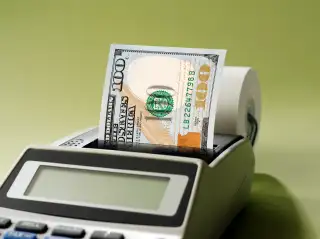How to Make Tapping a $1 Million Retirement Plan Less Taxing

More than three decades after the creation of the 401(k), this workplace plan has become the No. 1 way for Americans to save for retirement. And save they have. The average plan balance has hit a record high, and the number of million-dollar-plus 401(k)s has more than doubled since 2012.
In the first part of this four-part series, we laid out how to build a $1 million 401(k) plan. Part two covered making your money last. Next up: getting smart about taxes when you draw down that $1 million.
Most of your 401(k) money was probably saved pretax, and once you start making withdrawals, Uncle Sam will want his share. The conventional wisdom would have you postpone taking out 401(k) funds for as long as possible, giving your money more time to grow tax-deferred. But retirees must start making required minimum distributions (RMDs) by age 70½. With a million-dollar-plus account, that income could push you into a higher tax bracket. Here are three possible ways to reduce that tax bite.
1. Make the Most of Income Dips
Perhaps in the year after you retire, with no paycheck coming in, you drop to the 15% bracket (income up to $73,800 for a married couple filing jointly). Or you have medical expenses or charitable deductions that reduce your taxable income briefly before you bump back up to a higher bracket. Tapping pretax accounts in low-tax years may enable you to pay less in taxes on future withdrawals, says Marc Freedman, a financial adviser in Peabody, Mass.
2. Spread Out the Tax Bill
Taking advantage of low-tax-bracket years to convert IRA money to a Roth can cut your tax bill over time. Just make sure you have cash on hand to pay the conversion taxes.
Say you and your spouse are both 62, with Social Security and pension income that covers your living expenses, as well as $800,000 in a rollover IRA. If you leave the money there, it will grow to nearly $1.1 million by the time you start taking RMDs, assuming 5% annual returns, says Andrew Sloan, a financial adviser in Louisville.
If you convert $50,000 a year to a Roth for eight years instead, paying $7,500 in income taxes each time, you can stay in the 15% bracket. But you will end up paying less in taxes when RMDs begin, since your IRA balance will be only $675,000. Meanwhile, you will have $475,000 in the Roth. Another benefit: Since Roth IRAs aren't subject to RMDs, you can pass on more of your IRAs to your heirs.
3. Plot Your Exit from Employer Stock
Some 401(k) investors, often those with large balances, hold company stock. Across all plans, 9% of 401(k) assets were in employer shares at the end of 2013, Vanguard data show—for 9% of participants, that stock accounts for more than 20% of their plan.
Unloading those shares at retirement will reduce the risk in your portfolio. Plus, that sale may cut your tax bill. That's because of a tax rule called net unrealized appreciation (NUA), which is the difference between the price you paid for the stock and its market value.
Say you bought 5,000 shares of company stock in your 401(k) at $20 a share, for a total price of $100,000. Five years later the shares are worth $50, or $250,000 in total. That gives you a cost of $100,000, and an NUA of $150,000. At retirement, you could simply roll that stock into an IRA. But to save on taxes, your best move may be to stash it in a taxable account while investing the balance of your plan in an IRA, says Jeffrey Levine, a CPA at IRAhelp.com.
All rollover IRA withdrawals will be taxed at your income tax rate, which can be as high as 39.6%. When you take company stock out of your 401(k), though, you owe income tax only on the original purchase price. Then, when you sell, you'll owe long-term capital gains taxes of no more than 20% on the NUA.
Of course, these complex strategies may call for an accountant or financial adviser. But after decades of careful saving, you don't want to jeopardize your million-dollar 401(k) with a bad tax move.